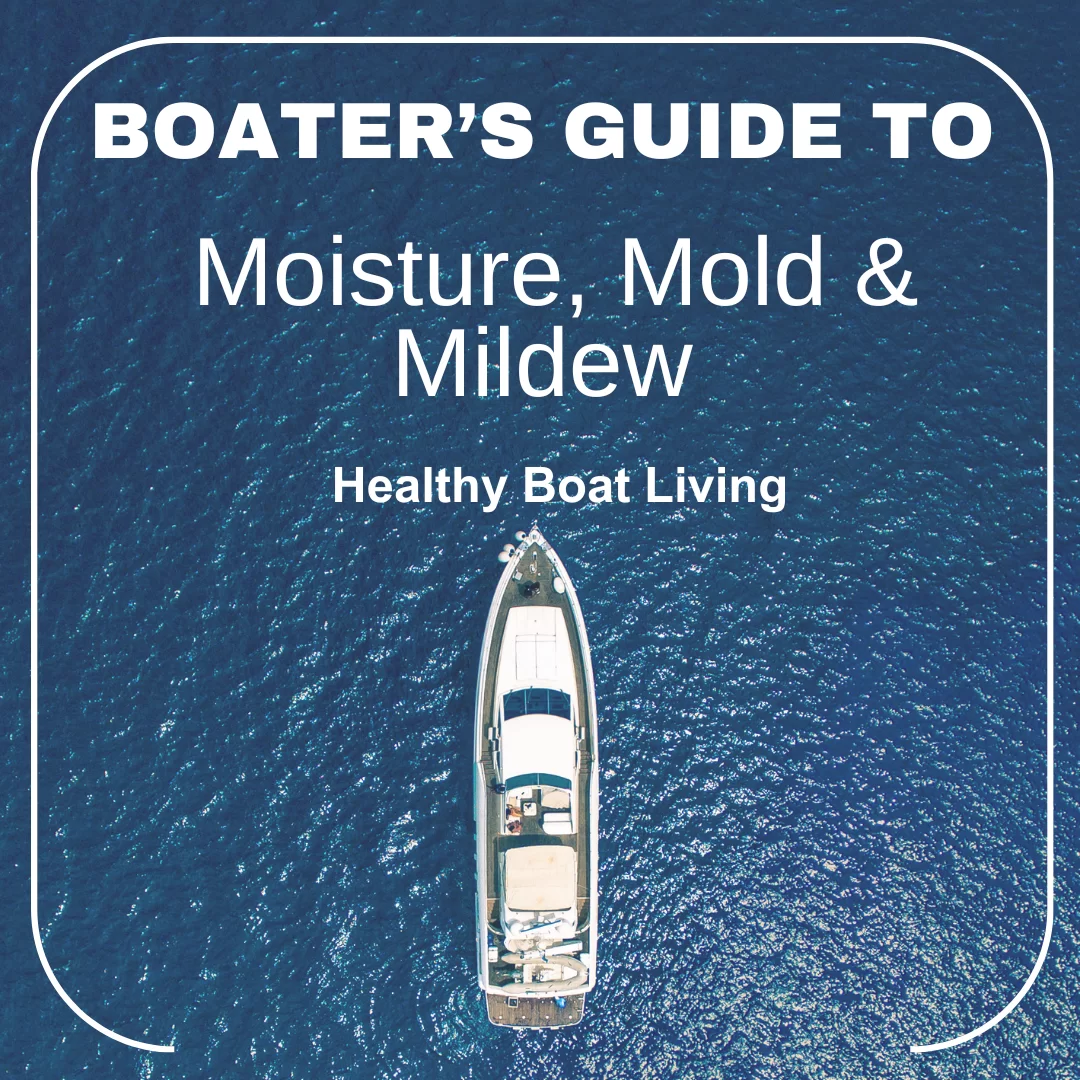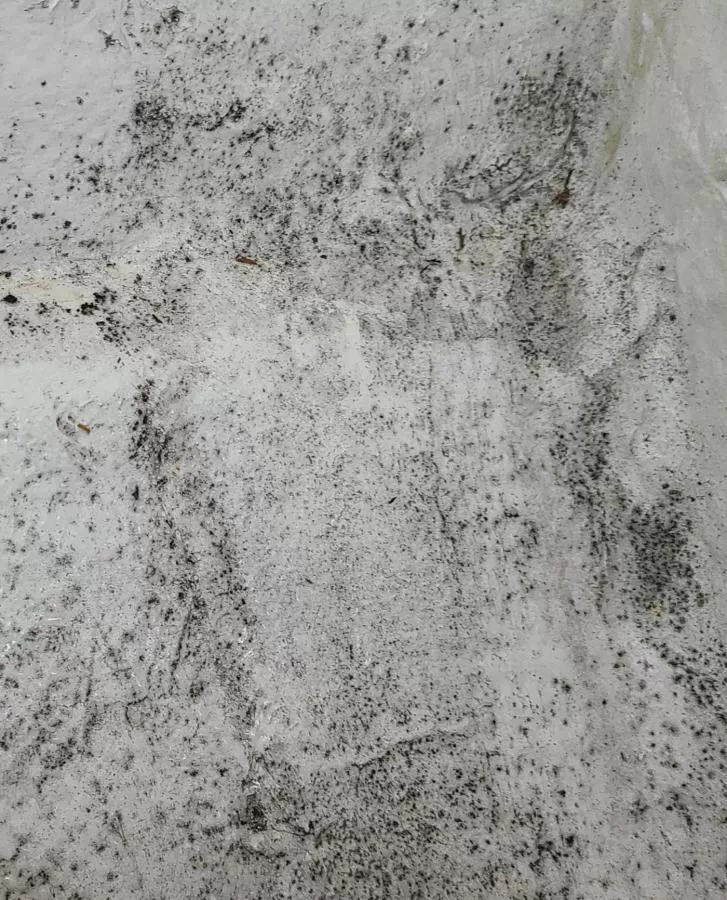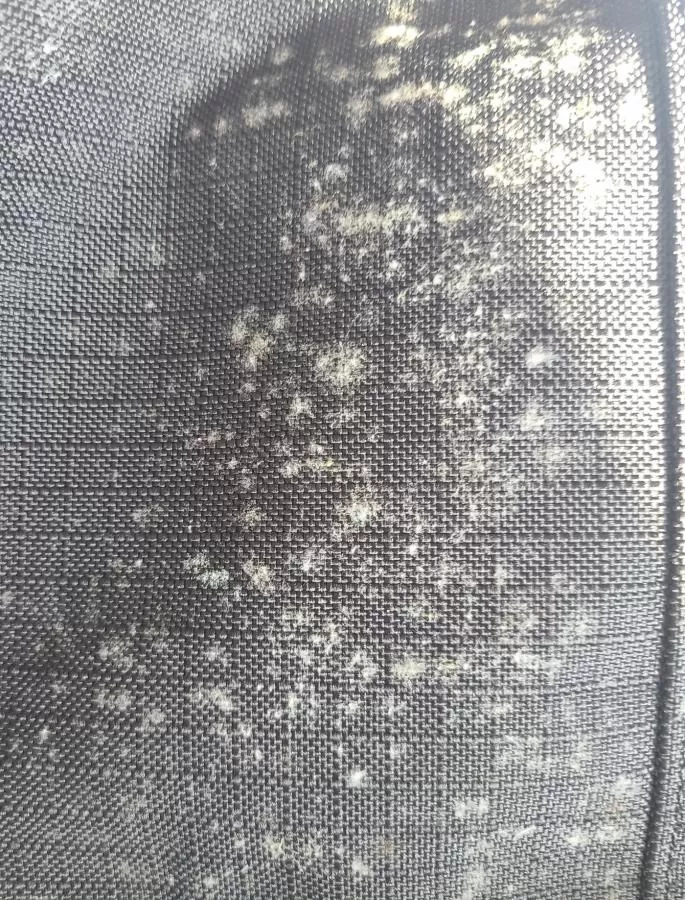The Ultimate Guide to a Dry & Healthy Boat: Stop Moisture, Mold & Mildew
Published: 02/02/2024

Don’t Let Your Boat Become a Musty Mess: Your Guide to Combatting Mold and Mildew
Is the air in your boat turning musty? Are you noticing black spots creeping across your boat cushions or in your lockers? Not only is mold and mildew unsightly, but it can also create an unhealthy environment.
Don't let hidden moisture transform your boat into a battleground against mold and mildew. This comprehensive guide equips you with the knowledge and tools to combat mold and mildew, ensure boat mildew prevention, and keep your vessel sparkling for years to come.
Packed with proven boat cleaning tips and expert advice, you'll discover everything you need for successful boat mold removal and to clean mold and mildew.
Your Action Plan for a Fresh and Fun Boating Life:
- Understanding the Enemy: Moisture Prevention - Learn science-backed strategies to control moisture levels and create a breathable environment that keeps your boat dry and mold-free. Discover the power of ventilation, dehumidifiers, and even advanced tactics for boat mold and mildew prevention.
- Conquering Mold and Mildew Growth - Discover safe and effective methods to eliminate existing mold and mildew from surfaces like boat cushions and seats. Explore the best boat mold and mildew removers and mold cleaning tips to tackle tough jobs.
- Proactive Maintenance for Long-Term Success - Gain valuable knowledge on creating a proactive boat cleaning routine that keeps your vessel fresh, prevents future mold growth, and ensures worry-free voyages. Learn boat cleaning tips for every surface and mildew removal techniques to keep your boat sparkling.
We've got you covered: Whether your boat is out on the open seas or tucked away in storage, this guide provides solutions for every situation. Learn how to use ventilation and desiccant packets to prevent moisture in stored boats and discover proper shrink-wrapping techniques.
Embrace the worry-free boating life! This one-stop guide empowers you to keep your boat dry, healthy, and free from mold and mildew, equipping you with the knowledge and tools for a fresh and fun boating experience.
For more information about keeping your boat or RV moisture free, see this blog.
Understanding the Enemy: Where Does Moisture Come From?
Before we dive into solutions, let's identify the culprits. Several factors contribute to boat moisture:
- Temperature fluctuations: Warm air holds more moisture than cold air, so as temperatures fluctuate condensation forms on cooler surfaces, adding to the moisture burden and condensation in the boat.
- Environmental Factors: Humidity, rain, and even evaporation from the surrounding water can all infiltrate your boat.
- Human Activities: Cooking, showering, and breathing all release moisture into the air.
- Leaks: Even small leaks can allow significant moisture to enter, leading to bigger problems like mold and mildew.
Mold and Mildew: What is the Difference?

This is mold
Mold and mildew are often used interchangeably, but they're not exactly the same thing. Here's a breakdown of their similarities and differences:
- Both are types of fungi that grow in damp environments.
- Both can cause allergies, respiratory problems, and other health issues.
- Both require similar conditions for growth: moisture, organic matter, and warm temperatures.
Mold: Typically, fuzzy or textured, with colors ranging from green and black to white and orange. Grows quickly and can cover large areas. Can be more dangerous due to releasing more spores and having the potential for deeper penetration into surfaces.
Mildew: Flat and powdery, often white or gray. Grows slowly and typically stays isolated. Usually considered less harmful, but still not ideal to have around. (1)
Condensation and Moisture Prevention Measures

This is mildew
Here are some proactive measures to prevent how to prevent condensation and moisture in the cabin and moisture from taking hold and causing mold or mildew:
Ventilation, ventilation, ventilation: Open hatches, portholes and windows whenever possible. This allows moist air to escape and fresh, dry air to enter. Installing cowl vents and dorade boxes can further enhance airflow. PortVisors will allow you to keep ports open even if it’s raining.
Ventilation systems can be installed that pull air in and exhaust air out. Alternatively, fans can be used to move air around provided the ventilation system allows air in and out of the boat. Strategically placed fans circulate air within the boat, preventing moisture from stagnating in corners and hidden spaces. Consider installing ceiling fans or portable oscillating fans for maximum impact.
Invest in a dehumidifier to keep running continuously in thr bathroom and this larger 70 oz. dehumidifier or this 95 oz. dehumidifier. Place in the galley sink or place one in the bilge so that the water run-off can exit the boat. These helpful machines absorb excess moisture from the air, creating a drier and more comfortable environment. The key with dehumidifiers is that the boat must be well sealed. Dehumidifiers work by drawing in moist air, removing moisture, and then expelling drier air. If the boat isn't sealed, the dehumidifier will constantly be battling fresh moist air entering the boat from outside. Although we use ine when we are onboard to help prevent moisture on the inside of the windows. Typically you will use a dehumidifier while the boat is in storage or not in use. Choose the model of dehumidifier for your boat that is the appropriate capacity for your boat size.
In addition to the dehumidifier, it is important to use a warm air circulator. This machine creates low heated warm air flow to protect the space. Excessive moisture can contribute to mold and mildew growth. A warm air circulator can help to reduce moisture levels by moving air around the space, preventing stagnant air pockets where condensation can form.
Use a battery powered squeegee vacuum to suck up and easily remove condensation from your windows. A squeegee vacuum is also handy for washing windows and getting streak free results. We love ours! They are very popular and frequently are out of stock on Amazon. Make a note to check stock in a few days if they are.
Ensure proper sealing around hatches, windows, and other openings. Wipe down wet surfaces promptly and air out damp towels and clothes. I find the best way to hang towels they don't fall or blow away is with these clips. The clip is the perfect size for the boat rail.
Consider using moisture-absorbing mats in high-traffic areas. I put a puppy potty training pad inside the door when it is raining or we have wet shoes.
Regularly check for and repair any cracks or damage that could allow moisture ingress. Inspect your boat regularly for condensation buildup, and signs of mold or mildew. Address any issues promptly to prevent further damage.
Try not to store anything fabric right against the hull – as condensation forms, the fabric will soak it up and get mildewy and will keep putting that moisture back into the air. And when you’re not on the boat, leave doors to lockers open. Turn boat cushions on their sides.
Use hypervent mattress underlay under your mattress and cushions. The ¾ inch polymer loops don't compress, allowing plenty of dry air to circulate between your mattress and a hard surface.
Minimize moisture release while cooking by using lids on pots and pans, covering boiling water, and venting steam outside whenever possible.
At the dock, keep an electric space heater on to keep surfaces dry. The one I recommend has a safety off switch if it tips over or overheats.
For engine and mechanical spaces there are bilge and engine room heaters as well. When you are absent from your boat, low-level heating devices such as an air dryer with fan, has a built-in fan that circulates warm air within your boat to keep the interior comfortably dry. Some boaters swear by a GoldenRod Dehumidifier that distributes heat evenly over the length of the rod heats and circulates warm, dry air throughout an enclosure on a 24 hour basis.
Desiccant moisture-absorbing packets calcium chloride crystals like these DampRid Hanging Moisture Absorber, 16 oz., 3 Pack are great for enclosed spaces like lockers and bilges. They work by drawing moisture out of the air, preventing mold growth and musty odors. Replace them regularly for optimal effectiveness.
Larger desiccant containers can be placed around the boat and regularly drained. For a natural approach, place bowls of salt or coffee grounds in strategic locations around the boat. These natural desiccants absorb moisture.
Regularly cracking open hatches to vent moisture helps, but it's not ideal, especially when battling cold temperatures.
Propane and Diesel Cabin Heaters and Stoves Versus Direct Vent Heaters
Burning fuel naturally produces water vapor, and most heaters release this vapor inside your cabin. This increased humidity condenses on cool surfaces, leading to dreaded mold and mildew growth.
Unlike traditional heaters which release combustion moisture into the cabin, direct vent heaters expel it outside, keeping your boat dry and preventing mold growth.
How to Prevent Moisture in a Stored Boat
Prevention is key: The best way to deal with mold is to prevent it from growing in the first place. Ensure proper ventilation and address moisture issues before storage to create an environment less conducive to mold growth.
When the boat is stored, keep lockers clean and open where possible.
Removing some of the contents of lockers over the winter helps air to circulate. Take home bedding, mattresses, clothing, towels, and other items that can attract moisture, as these can be ruined by mold. Turn cushions on their sides and don't allow fabric to touch the hull.
Desiccant moisture-absorbing buckets are great for enclosed spaces like lockers.
Shrink-wrap is great for protecting a boat from snow, dirt, and sun, but it limits how much air can get below. Vents should be installed in the shrink-wrap; depending on the size of the boat, several may be required.
There are also solar-powered vents designed specifically for shrink-wrap. If no security concerns exist, consider leaving the cabin doors open under the shrink-wrap.
Open covers over the bilge and leave a reminder note on your door so you don’t fall in.
When Moisture Prevention Fails
Even the most cautious captain can encounter unexpected moisture issues.
Here's how to tackle them head-on:
- Locate the source: Identify the origin of the moisture intrusion. Leaky fittings, poorly functioning hatches, or even condensation around poorly insulated pipes could be the culprits. Consider adding insulation to cold surfaces where condensation tends to form.
- Dry things out: Thoroughly dry affected areas with fans and dehumidifiers. Open hatches and portholes to promote air circulation and evaporation.
Cleaning Mold and Mildew
Your health and safety are paramount when dealing with mold and take precautions to limit your exposure to mold and mold spores. Opt for safe and effective solutions and prioritize professional help if needed. (2)
Always use gloves and eye protection when cleaning up mold!
Use a cleaning product first to remove existing mold and mildew growth. Ensure the area is completely dry before closing off the space. Whether dead or alive, mold is allergenic, and some molds may be toxic.
Mold can generally be removed from nonporous (hard) surfaces like plastic, vinyl, glass, sealed wood and concrete by damp wiping with a water and detergent solution. It is important to dry these surfaces quickly and thoroughly to discourage further mold growth.
Wiping cloths should be replaced frequently particularly if numerous pieces of furniture or large surface areas are involved. All wiping cloths must be disposed of following completion of the job.
Instructions for cleaning surfaces, as listed on product labels, should always be read and followed.
Absorbent or porous materials, such as drywall, ceiling tiles, insulation, carpet, may have to be thrown away if they become moldy. Since molds will infiltrate porous substances and grow on or fill in empty spaces or crevices, the mold can be difficult or impossible to remove completely. Moldy materials should be lightly misted with water prior to removal to reduce the threat of spore and dust dispersal. Areas surrounding the removed material must be damp wiped, HEPA vacuumed or both following removal of the mold. The extent of additional cleaning will be determined by what is removed. (4) The filter and contents of the HEPA vacuum must be disposed of in well-sealed plastic bags.
Use an EPA-registered product. Use cloths, stiff brushes and, if needed, mist-spray bottles. Do not use high-pressure sprayers, as this could dislodge and spread mold spores.
And finally, keep an eye out for new growth or continued dampness. Remember, mold can form in as little as two to three days.
Vinegar, Borax and Bleach Are Not Complete Solutions for Mold
Bleach works well in a fridge, countertop or with white sheets, but it could ruin your headlining, soft furnishings and wood. The Environmental Protection Agency (EPA) advises against the use of bleach namely because bleach fumes can be dangerous, and it is frequently ineffective.
While bleach can be effective in killing mold on nonporous surfaces such as tile and porcelain, it does not work on wood and other porous material, such as drywall. On those surfaces, bleach can encourage more mold growth. And, bleach does not prevent the regrowth of new colonies when materials stay damp. (3)
Borax is frequently recommended for cleaning and killing mold. While borax has some antifungal properties, it's not recommended as a primary solution for killing mold. Borax only inhibits the growth of certain mold strains, and its effectiveness can vary depending on the type and severity of the mold infestation. For tougher strains or established colonies, it's unlikely to provide sufficient control. (4)
Vinegar can be a helpful tool but it's not a complete solution for complete mold eradication and it comes with limitations. Vinegar only works against some molds and germs but it's not a registered disinfectant. PMID: 26042369 While vinegar kills some mold. Use EPA-registered products for proper disinfection. And, vinegar can damage certain materials like granite, wood, and rubber. (5) (8)
EPA-Registered Mold Removal Products
For effective mold removal, consider safer and more reliable options like of using EPA-registered disinfectants for proper mold remediation:
Commercial mold removers: Choose EPA-registered products specifically designed for mold removal. Follow the manufacturer's instructions carefully for safe and effective use.
Professional cleaning: For extensive or persistent mold infestations, consider seeking help from professional mold remediation services. They have the expertise and equipment to remove mold and prevent its recurrence safely and thoroughly.
Here are a few EPA-registered products specifically designed for mold removal:
1. Concrobium Mold Control:
- Highly effective against a wide range of mold and mildew strains.
- Leaves behind an invisible antimicrobial shield to prevent future mold growth.
- Bleach-free, ammonia-free, and low-odor formula.
- Safe for use on hard and fabric surfaces.
- Kills over 100 microorganisms, including mold, bacteria, and viruses.
- EPA-registered disinfectant, virucide, fungicide, and cleaner.
- Ready-to-use formula requiring no mixing or dilution.
- Suitable for hard surfaces like walls, countertops, and floors.
3. Rejuvenate Mold and Mildew Stain Remover:
- Cleans and removes visible mold stains and discoloration.
- Kills mold spores to prevent further growth.
- Bleach-free formula with a fresh scent.
- Works on a variety of surfaces, including wood, tile, grout, and vinyl.
5. Mold Armor Mold and Mildew Control Spray:
- Kills mold and mildew on contact.
- Prevents future growth for up to 3 months.
- Safe for use on a variety of surfaces, including painted walls, wood, and fabrics.
- Foaming formula clings to surfaces for better penetration.
Beyond the Basics: Advanced Strategies for Moisture Control
For those facing persistent moisture challenges, consider these additional tactics:
- Positive Input Ventilation (PIV): This system introduces fresh, dry air into the boat, pushing out moist air and creating a slight positive pressure that discourages moisture infiltration.
- Bilge ventilation: Ensure your bilge area is properly ventilated to prevent moisture buildup and stagnant air. Consider installing bilge fans or hatches for improved airflow.
- Insulation: Properly installed insulation can help regulate temperature within the boat, reducing condensation and creating a more comfortable environment.
- Professional help: If the moisture problem persists despite your best efforts, consult a marine professional for expert advice and assistance.
Remember, vigilance is key! By incorporating these moisture-busting strategies into your regular routine, you can create a dry and healthy environment for your boat, ensuring its longevity and your sailing happiness. So, hoist the sails, crank up the fans, and let the battle against moisture commence!
With the right knowledge and tools, you can keep your boat dry and delightful, leaving you free to focus on what truly matters: enjoying the open waters and creating lasting nautical memories.
Join Our Journey Aboard Healthy Boat Living with Maria Faires!

Our 30 foot Tolly MV Little Bear in the San Juan Island Cypress Island
Join fellow boating enthusiast and Captain, Maria for a voyage of healthy living on the waves!
Get onboard: Blog | Instagram | Facebook | YouTube
I am a dietitian, personal trainer, & passionate mariner, and share my journeys in the San Juan Islands aboard Tollycraft "Little Bear" with husband George.
We're currently cruising through the San Juan Islands, Gulf Islands, and Desolation Sound, sharing our best tips for everything from safe navigation and destination ideas to anything that makes boating better.
Mastering space-saving packing, creating magical boat experiences, boat hacks, on-board workouts, shoreside fitness, cooking on a boat, stunning boat decor inspo, ocean-inspired style and marine life insights.
Sources:
(1) https://www.epa.gov/mold
(2) https://www.epa.gov/mold/brief-guide-mold-moisture-and-your-home#tab-4
(3) https://www.scientificamerican.com/article/beyond-bleach-mold-is-a-long-term-problem-after-flood-and-disasters/
(4) https://www.cdc.gov/mold/cleanup.htm
(5)https://www.cdc.gov/mold/default.htm
(6) https://www.ehs.ufl.edu/departments/occupational-safety-risk/industrial-hygiene-occupational-safety/indoor-air-quality/mold-clean-up-guidelines/#:~:text=Moldy%20materials%20should%20be%20lightly,determined%20by%20what%20is%20removed.
(7) https://www.healthline.com/health/does-vinegar-kill-mold#does-it-work
(8) PMID: 26042369
Categories: Healthy Boat Living





